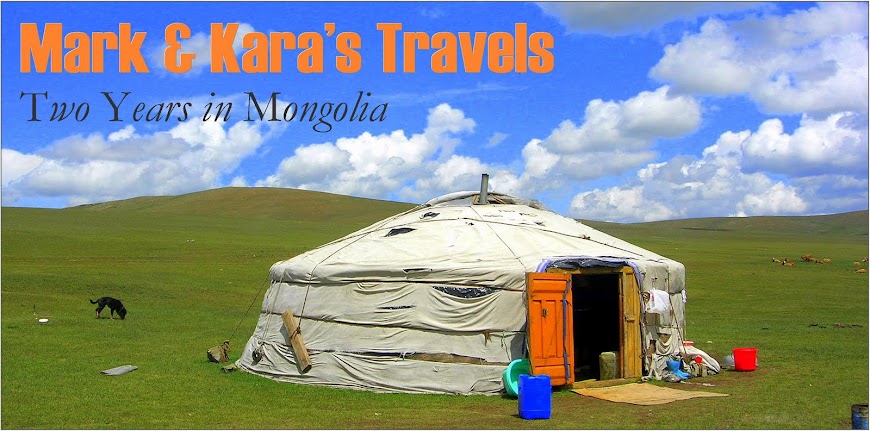To begin, the number one, most popular food that must be at every Tsagaan Sar celebration are buuz. Buuz are small Mongolian meat dumplings that are steamed. Most people I asked said on average they made 1,000 buuz for Tsagaan Sar! They can be made with any kind of meat but most of the ones we ate this year were made from beef or horse meat. Over the course of six days Mark managed to eat at least 100 buuz (he counted - actually he's telling me it was a total of 109 over an 8 day period) while I finished having eaten around 40-50.
In addition to buuz each family has at least one salad to share. Some of the salads include carrot salad, potato salad, and fruit salad (fruit covered in mayonnaise). Most families who plan on hosting and who can afford it also have a cooked sheep’s back and tail on the table. It's tradition that you taste at least one small piece of this meat.
Also sitting on the table, as you can see, is a tower of cookie-like, hard biscuits. On top you will find all kinds of candy, sugar cubes, and dairy products. It is customary to take one small piece from this tower. At this particular house there are 5 layers of "biscuits", but at any other home there may be 3, 5, 7, or even 9 layers. It's always an odd number of layers to represent one layer of sadness sandwiched by two layers of happiness. The number of layers is based on a mixture of the homeowner's age and years married.
Another very important component to all Tsagaan Sar celebrations is vodka, and various other types of alcohol. At every home you go to you must be served at least three shots of vodka. You don’t have to drink all three shots, but they are served to you. Some hosts will let you get away with just a tiny sip of each, while others say, “Drink, drink!” until you’ve drank an amount they think is sufficient. Some families serve other drinks along with the vodka, including homemade juice, wine, or Mongolian vodka, which is made from fermented yaks’ milk. In some homes everybody has their own shot glass but often you share one glass. The server pours a shot and hands it to you, always in their right hand. You must always accept it with your right hand and to be even more respectful you touch your left hand to your right elbow as you are accepting it. You hand it back the same way when you’re done. Also, you should have your sleeves rolled down as a sign of respect. Once one person has handed it back to the server the process continues with each person around the room.
Typically, once you've tried some candy, drank your milk tea, eaten some buuz, and sipped some vodka it's time to move on to the next house. You don't want to overstay your welcome, so most visits last only a little over an hour on average.























